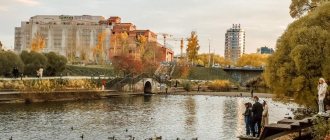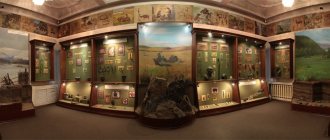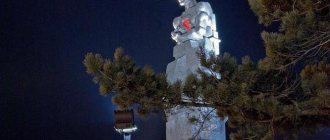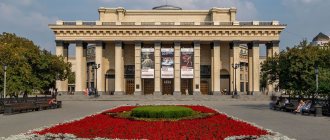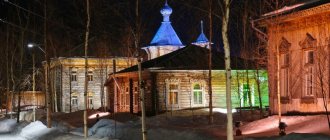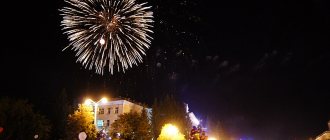Monuments to political and military figures
The lion's share of attractions in cities are traditionally occupied by monuments to famous people who left their mark on the history of Russia and changed the course of events in the country.
Thus, the monument to Zhukov in Yekaterinburg, located on Lenin Avenue, 71, was designed in honor of the 50th anniversary of Victory in the Great Patriotic War by sculptor Konstantin Grunberg. The location of the monument was not chosen by chance - behind it is the headquarters of the Volga-Ural Military District, in which Georgy Konstantinovich held command. Citizens and tourists invariably bring flowers to the sculpture.
An interesting place is the monument to Yeltsin in Yekaterinburg on Boris Yeltsin Street. Not only because it is a 10-meter obelisk, with a bas-relief of the first president carved inside, but also because since 2011 (the date of the opening of the architectural structure in honor of the 80th anniversary of Boris Nikolayevich) the memorial has been desecrated by vandals several times - the stele causes a storm of negativity as among party citizens and simply among residents.
Monuments to movie heroes
The television series “Happy Together” inspired sculptor Viktor Mosielev to create a monument to Gene Bukin. The location of the monument (at 48 Weiner Street) is no coincidence: in the store opposite Gen, according to the story, works as a shoe salesman. The height of the monument is 2.2 meters, and its weight reaches almost half a ton. The opening of the monument took place in 2011, which was attended by the actor who played the role of Bukin, Viktor Loginov.
On Belinsky Street there is a monument to famous book and movie characters - Ostap Bender and Kisa Vorobyaninov. The figures look at each other, while Ostap has an apple in his hand, and Kisa has a pince-nez and a hat. This ensemble is especially popular among city guests.
Unusual objects
Monuments in Yekaterinburg are not only architectural and historical in nature, but also make people think about their shortcomings and characteristics.
So, on Studencheskaya Street there is a monument to curiosity. The author of the sculpture is Viktor Davydov, who is also a pioneer in Russia in making sculptures in this style. The pedestal consists of a door with a peephole more than 3 meters high and the figures of a man and a woman looking into the hole from different sides.
The art designers decided to make Malysheva Street a place for negotiations, and a hint of this was a monument in the form of a tall kitchen grater. To “grind” questions, benches and lanterns are located nearby, so the flow of people does not stop even at late hours.
Historical monuments in Yekaterinburg
The photo of the “Black Tulip” monument, even through the monitor, evokes irresistible grief and pity for all those killed and injured during the conflict in Afghanistan. It was no coincidence that the monument received its name; this is what the soldiers called the aircraft carrying the bodies of the dead. The sculptural complex is designed in such a way that it resembles an airplane with a passenger sitting inside. Over time, steles with the names of the fallen Ural soldiers in the war in Afghanistan were added to the monument.
Those wishing to honor the memory of the deceased can take public transport to the “Shartashskaya Street” stop and from there exit onto Mamin-Sibiryaka Street.
Many cultural monuments in Yekaterinburg are dedicated to the events of the Great Patriotic War, one of these is the monument dedicated to the warrior-athletes of the Urals, participants in the battles. The sculpture is located on Bolshakova Street, 90. It consists of three figures carved into a single monolith, symbolizing the commander, the orderly and the fighter. The Ural warrior-athletes were trained according to special programs, carried out the most difficult secret tasks, and many gave their lives for their Motherland. Therefore, in 1996, a monument was erected in honor of these brave people.
Historical reference
The engineer, historian and statesman Vasily Tatishchev arrived in the Urals in 1720 with the goal of inspecting the region and identifying sites for the construction of factories. He settled at the Uktus plant, where he founded the Mining Office, which later became the Siberian Higher Mining Authority. Under his leadership, several factories were created, which became city-forming enterprises. In addition, the scientist was actively involved in education, road construction, etc.
His active work did not please the Ural businessman Akinfiy Nikitich Demidov, who accused Tatishchev of embezzlement. An engineer, friend and ally of Peter I, William de Gennin, was sent to the Urals for the investigation, who examined the charges and acquitted Vasily Tatishchev.
Although hostility arose between the figures, in subsequent years they worked fruitfully on the development of the Ural industry. In 1793, the Metallurgical Plant named after Catherine I was opened, which became the city-forming enterprise of Yekaterinburg. Today, in addition to the monument to the founding fathers, in the Ural capital there are streets named after great scientists.
© Anna Kudryavtseva
Modern Art
New trends have affected the whole world, including monuments in Yekaterinburg. For example, on Gorky Street there is a monument to a keyboard that is not officially recognized as a landmark. Its location on the city embankment has led to the fact that this site is the site of constant photo sessions for both tourists and ordinary citizens. The keys are made of concrete, and are 16 meters long and 4 meters wide. The designations fully correspond to the real ones. The monument was opened in 2005 according to the design of Anatoly Vyatkin.
Sculptor Sergei Belyaev decided to diversify the monuments in Yekaterinburg with the world's first sculpture dedicated to a bank plastic card. The card itself is quite symbolic; it contains a reference to its ideological parent, science fiction writer Edward Bellam - he was the first to describe the semblance of a modern card in his writings. You can see the monument on Malysheva Street.
Sights of Ekaterinburg - briefly
Have you ever been to Yekaterinburg and don’t know about its attractions? Let's get acquainted with a city in which modern architecture is in perfect harmony with buildings of the 18th-19th centuries.
Yekaterinburg is a city of over a million people, located on the border of Europe and Asia. The Ural capital has almost three hundred years of history. The city is a cultural and historical center and attracts Russian and foreign tourists.
By decree of Peter I in 1723
The construction of a fortress-factory began on the Iset River among dense forests. The work was supervised by Vasily Tatishchev and Wilhelm de Gennin.
TO 1726
year the main buildings were completed. A stone bridge connected the two banks of the river, and a dam connected the inner square. The left bank was called the church side - a church was erected there in honor of the Great Martyr Catherine. The right side is trading.
This place is the main attraction of the city. Plotinka is what this place is called now. All mass celebrations take place here. People come here to meet friends, admire the historical part of the city, look into museums, and take pictures at the monument to the city’s founders: Vasily Tatishchev and Wilhelm de Gennin.
Along Iset there is a Historical Square. A small chapel was erected on the site of the former church.
In the left bank part, in the workshops of a former mechanical factory, there is a museum. In the open-air courtyard, there is large equipment produced by Ural factories in the 19th-20th centuries, and a monument to Peter I. The buildings house a museum with permanent exhibitions, including “Architecture of the Stone Belt.”
The museum organizes walking tours:
— “Architectural palette of modern Yekaterinburg”, during which tourists get acquainted with the buildings of the 18th-21st centuries;
— “Monuments of Constructivism” – allows you to see objects of avant-garde architecture.
The Ural Nature Museum is located in the historical park. The exhibits on display reveal the riches of the subsoil, flora and fauna of the region.
Nearby there is a water tower with the “Metal Shop” exhibition. Such shops were common in Yekaterinburg in the second half of the 19th century.
century.
Having walked along the walls of the museums and crossed a bridge hung with locks (not a single wedding takes place without visiting this place and consolidating the marriage bonds with a castle), we find ourselves in the Museum of Fine Arts. It is located in the building of the hospital of the Yekaterinburg ironworks, erected in 1730 -1740
gg.
Why should you definitely visit this place? In the center of the largest hall is the Kasli cast-iron pavilion. The museum exhibits are varied:
These are products of stone cutting and jewelry, porcelain and glass figurines and dishes, cast iron, tools and steel engravings. The art exhibition is presented by paintings by famous Russian and Western European artists. Particular attention is paid to icon painting.
Behind the bridge, on the shore of the City Pond, is the most beautiful building - the Sevastyanov House. It combines several styles and personifies the Ural minerals. The architecture of the palace stands out from other objects.
The building was first mentioned in 1817
year. Its owners changed several times, but the name Sevastyanov stuck. Sevastyanov was the richest gold miner and the first chairman of the Yekaterinburg district zemstvo government.
WITH 1874
years and before the revolution, the Ekaterinburg District Court was located in the house, and the basement was converted into prison cells. Excursions here must be booked in advance.
Next to the Sevastyanov House is the Museum of Stone-Cutting and Jewelry Art. It should be noted that the products of craftsmen made of precious stones and metals are in several museums. Fairy-tale characters settled in the building and the Museum of Fine Arts.
The fabulous riches of the underground storerooms of the Urals are known from the tales of Pavel Bazhov, whose museum is located within walking distance from the Historical Square.
And the ores mined in the Urals can be seen in the Museum of Geology and Mineralogy and the Ural Geological Museum.
In Yekaterinburg at the end 2019
94
museums and exhibition halls were opened during the year The Museum of the History of Yekaterinburg, the Museum of Local Lore, the Museum Center of Folk Art "Gamayun" and many others represent different areas of life and activity of the city.
Yekaterinburg is known as the place of death of Nicholas II and his family. A chapel has been erected at the site of the execution. The Temple on the Blood rises nearby. Ganina Yama is the name of the place where the remains of the royal family were found. Excursion buses depart from the train station there.
Ganina Yama is a mine with abandoned mines in which iron ore and coal were mined for the Verkh-Isetsky plant. In 2000 -2003
years, the male Orthodox Monastery of the Holy Royal Passion-Bearers with many churches and buildings was erected on this site.
The excursion includes a visit to the place where the remains of the Romanov family were found.
The exhibitions of the private Romanov Museum, located on Turgenev Street, not far from the Temple on the Blood, tell about the royal family.
Wandering through the streets of the central part of the city, it is worth looking into the literary quarter, admiring the monuments and ancient buildings.
The Rastorguev-Kharitonov estate was built at the end 18-
early
19th
century. It is mentioned by D. N. Mamin-Sibiryak in the novel “Privalov’s Millions” and by A. N. Tolstoy in the story “Kharitonov’s Gold”.
In Yekaterinburg there is the Mamin-Sibiryak Museum. A monument to the writer was erected in the city center.
The mansion of the merchant M. M. Oshurkov is known as the “Little Herzenka” children's library. A museum club is located in the house of merchants of the II Agafurov guild. The Agafurov brothers had an extensive trading network in many Russian cities and were members of a charitable society.
Merchant mansions and houses in the city center are common. Each building has its own history and is a masterpiece of Russian architecture.
Yekaterinburg is a city of theaters, studios and concert halls. Performances take place on 57-
and theatrical stages.
The oldest is the Yekaterinburg Opera and Ballet Theater, built in 1912
year. Today it continues to be a decoration of the city.
The Nutcracker ballet theater is located in the former cinema building. Here young dancers take their first steps in art and are the main participants in performances.
In the central part of the city there are theaters for musical comedy and young spectators, a variety theater, a Philharmonic, a circus and other objects of performing arts.
A separate topic is military Yekaterinburg. During World War II, many factories were transferred to Sverdlovsk.
In the suburbs of the city, in Verkhnyaya Pyshma, there is an open-air Museum of Military Equipment.
Monument to G. Zhukov, “Black Tulip”. This is not the entire list of objects that are worth visiting.
The development of the city does not stand still. Ekaterinburg is growing and developing in different directions; new objects appear that are worth paying attention to.
The new unique residential area Academichesky has become a modern attraction. Its construction began at the end of the first decade of the 21st century and has been ongoing for more than 10
years.
It is designed for 350
thousand inhabitants.
Ekaterinburg Arena - the former Central Stadium - is a sports landmark of the city. It was reconstructed for the World Cup 2018
of the year.
A grandiose modern sports complex with stands for 25
thousand seats, decorated with sculptures, fits well into the city architecture.
EXPO Center is widely known outside of Russia. He appeared in Yekaterinburg in 2011
year. Both regional and international conferences and exhibitions are held here.
It is impossible not to mention the Yeltsin Center and the monument to the First President of Russia.
Yeltsin Center opened in 2015
year.
This is the place where exhibitions related to the life and work of Boris Nikolaevich are located. Concerts, festivals, and exhibitions are constantly held within the walls of this building. Since December 2015
, the Piotrovsky book store has been holding lectures to which public and cultural figures are invited. In the cafe, friends meet and business meetings take place over a cup of coffee in a pleasant atmosphere.
We can talk endlessly about the sights of Yekaterinburg. The city has a rich historical past and a wonderful bright future awaits it.
Monuments dedicated to celebrities
Michael Jackson received material embodiment in various parts of the world, Yekaterinburg was no exception. On Weiner Street, a 3-meter-tall sculpture adorns the square in front of the shopping center. Townspeople-fans became the organizers of the installation of this monument, which conveys the entire essence of the artist: moonwalk, tilted hat, right hand as if addressing the audience.
The residents of Yekaterinburg, who love the work of The Beatles, also distinguished themselves. On Maxim Gorky Street in 2009, a cast-iron silhouette of the band members appeared mounted into a brick wall. The opening was even attended by the band founded by John Lennon – The Quarrymen.
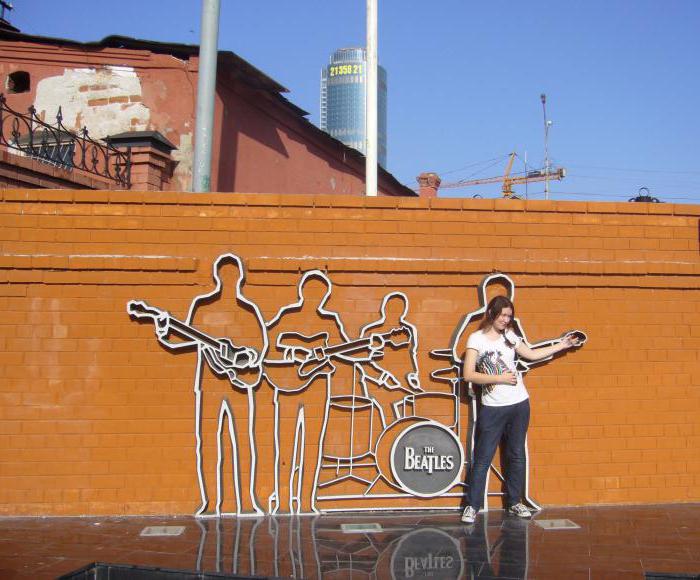
Making monuments is a very complex and painstaking craft. Yekaterinburg boasts truly soulful and touching obelisks, pedestals and memorials. All this is the merit of the most talented sculptors who work on cultural projects not only in Yekaterinburg, but throughout the country. Thanks to their work, the memory of those who are no longer with us is honored.
Interesting Facts
Historians believe that during their lifetime the founding fathers were not friendly and their contemporaries would be very surprised to see such a monument. In addition, the sculptor depicted Tatishchev and de Gennin as surprisingly similar, although this is not the case. Not even all residents of Yekaterinburg can distinguish them from each other and say exactly which one is which. Adding to the complexity is the fact that the inscriptions under the sculptures are mixed up and do not correspond to reality - William de Gennin is located on the left, he can be recognized by his cocked hat, Vasily Tatishchev stands on the right - he has a wig on his head.
After the famous cartoon was shown, young people began to call the monument “Beavis and Butt-head.”
Panorama of the monument in winter:

